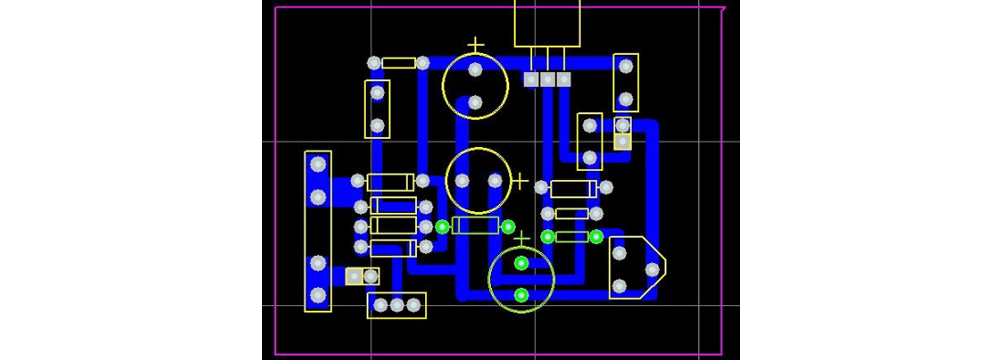In laboratories around the world, problems such as unstable power supply, voltage drift, and noise interference are constantly happening, giving engineers headaches. The emergence of programmable DC power supply is becoming a "laboratory savior" to solve these pain points.
1. Principle of variable DC power supply
The basic principle of variable DC power supply is to convert AC power into DC power and change the output voltage by adjusting circuit parameters. Specifically, variable DC power supply usually consists of the following parts: rectifier circuit, filter circuit, voltage regulator circuit, and voltage regulation circuit.
Rectifier circuit: convert AC power into DC power. The commonly used rectifier circuit is a bridge rectifier circuit, which consists of four diodes. In the positive half cycle of AC power, D1 and D2 are turned on, and D3 and D4 are turned off; in the negative half cycle, D3 and D4 are turned on, and D1 and D2 are turned off. In this way, the positive and negative half cycles of AC power are rectified into unidirectional currents to obtain pulsating DC power.
Filter circuit: smooth the pulsating DC power after rectification to reduce ripple voltage. Common filter circuits include capacitor filtering, inductor filtering and LC filtering. The capacitor filter circuit smoothes current fluctuations and reduces ripple voltage through the charging and discharging of the capacitor.
Voltage regulator circuit: stabilizes the output voltage. The voltage regulator circuit can use a linear regulator or a switching regulator. The linear regulator keeps the output voltage stable by adjusting the voltage difference between the output terminal and the reference voltage. It has low noise but low efficiency; the switching regulator stabilizes the output voltage by controlling the conduction and cutoff of the switching element. It has high efficiency but may generate electromagnetic interference.
Voltage regulation circuit: allows the user to adjust the output voltage as needed. This is usually achieved by changing certain parameters in the circuit, such as changing the resistance value or adjusting the control signal.
Application scenarios of variable DC power supply include various electronic devices that require stable DC power supply, such as computers, communication equipment, industrial control equipment, etc. Its advantages include stable output voltage, high reliability, and adaptability to different load changes.

2. Application of variable DC power supply
Communication equipment: In microwave communication equipment, mobile communication equipment, telecommunication base stations and other communication equipment, DC power supply provides stable DC power supply to ensure the normal operation of the equipment and the stability of communication.
Industrial automation: In industrial robots, automated production lines, CNC machine tools and other equipment, DC power supply ensures the stable operation of the equipment. For example, industrial robots require stable DC power supply to ensure the accuracy and reliability of their movements.
Electric vehicle charging: Electric vehicles require DC power supply to store electrical energy, and DC power supply provides stable charging current and voltage to ensure the safe charging of electric vehicles.
LED lighting: LED lights usually require constant current power supply, and DC power supply can provide stable DC current output to meet the working requirements of LED lights.
Solar photovoltaic power generation system: In solar photovoltaic power generation system, DC power supply is used to convert solar light energy into DC power energy, and appropriately adjust and control it to supply electrical equipment in the fields of home, industry and commerce.
Aerospace: In aircraft electronic equipment, spacecraft, satellites and other equipment, DC power supply provides stable power supply to ensure the normal operation of equipment and flight safety.
Medical equipment: Medical equipment such as X-ray machines, electrocardiographs, and monitors require precise and stable power supplies to ensure the accuracy and safety of medical operations. DC power supplies are widely used in medical places such as hospitals and clinics.
3. In laboratories, production lines, and R&D centers, engineers often encounter the following power supply problems:
3.1. Voltage/current drift: the culprit of experimental data "distortion"
When traditional linear power supplies are running for a long time, the output voltage may drift due to temperature changes, resulting in measurement errors.
Case: When a semiconductor company tested IC chips, the yield rate dropped by 5% due to power supply drift, resulting in a loss of more than $100,000.
3.2. Slow dynamic response: unable to keep up with rapidly changing load requirements
When testing motors, batteries, or radio frequency devices, sudden load changes may cause traditional power supplies to respond lags or even trigger protection shutdowns.
Engineers complained: "When testing the BMS of electric vehicles, the power supply reacted too slowly and the system misjudged it as a fault!"
3.3. Noise interference: the "invisible killer" of precision measurement
The high-frequency noise of the switching power supply may affect sensitive circuits (such as sensors and medical equipment), causing signal distortion.
3.4. Lack of programmability: inefficient manual adjustment
Traditional power supplies require manual knob adjustment, while modern experiments often require automated testing (such as LabVIEW control).

4. The "savior" skill of variable DC power supply: Why can it save the experiment?
Variable DC power supply (especially programmable DC power supply) has become the "stable guardian" of the laboratory with the following core technologies:
4.1. Ultra-high precision & ultra-low ripple
Precision: Advanced models can reach ±0.01% voltage accuracy to ensure reliable measurement data.
Low noise: Using linear + switching hybrid technology, the ripple noise is as low as 1mVpp, which is suitable for precision electronic testing.
4.2 Fast dynamic response (Load Transient Response)
When the load changes suddenly (such as battery charge and discharge test), the high-quality variable power supply can restore stability in milliseconds to avoid system false triggering.
4.3 Programmable & Automated Control
Support PC software control (such as SCPI instructions, LabVIEW integration) to realize automated test process and improve efficiency.
Case: A new energy laboratory simulated different working conditions by programming the power supply to shorten the battery test time by 40%.
4.4 Multi-channel & Modular Design
Multi-channel output can be expanded to meet the test requirements of complex systems (such as multi-voltage domain IC chips).
Summarize
As the core equipment of modern electronic testing, industrial production and new energy systems, the development of variable DC power supply is undergoing unprecedented technological changes. With the surge in global demand for efficient energy utilization, precision testing and intelligent control, variable DC power supply is evolving towards higher precision, stronger functions and more intelligence.
Share our interesting knowledge and stories on social media













